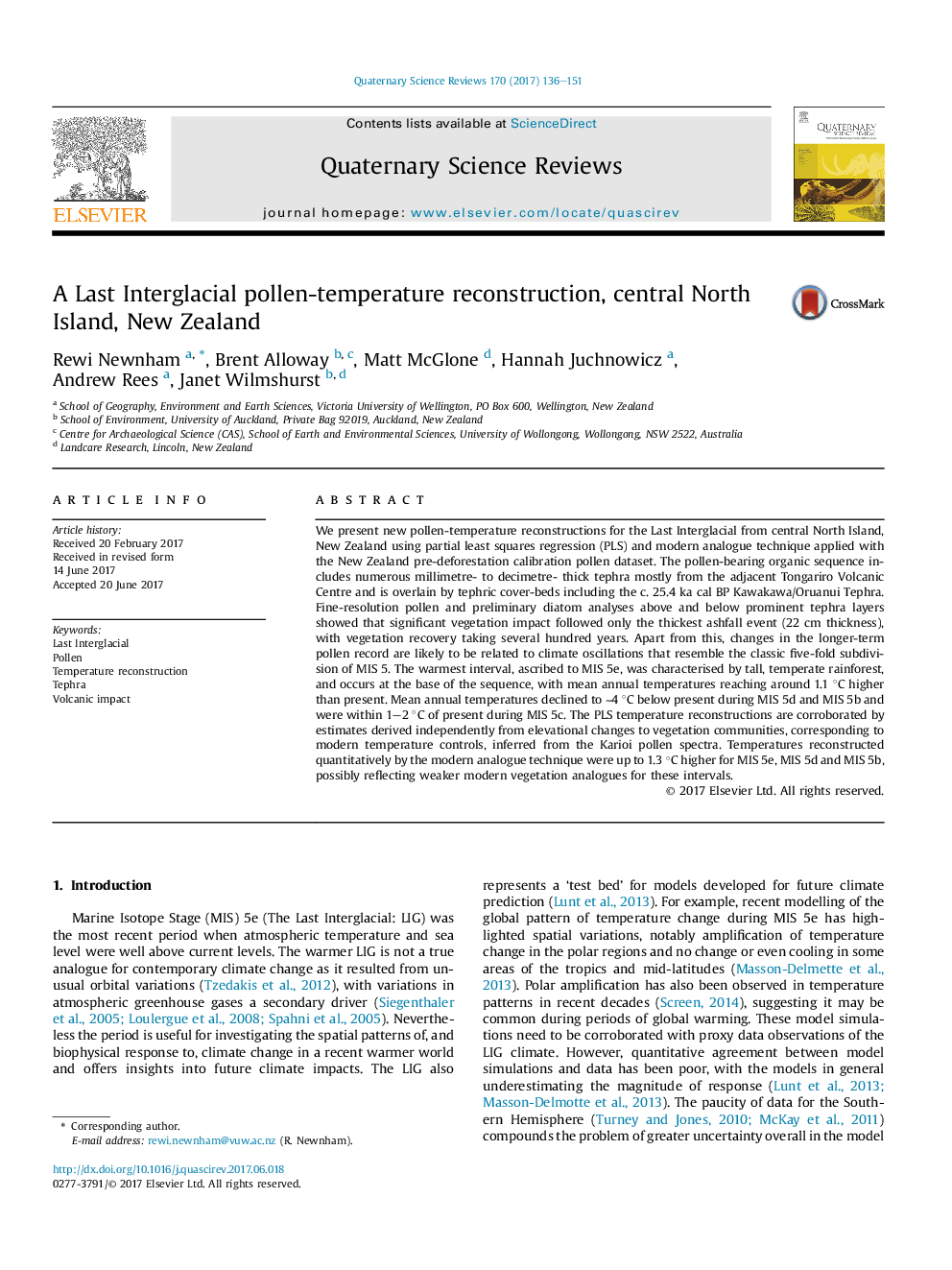| Article ID | Journal | Published Year | Pages | File Type |
|---|---|---|---|---|
| 5786570 | Quaternary Science Reviews | 2017 | 16 Pages |
Abstract
We present new pollen-temperature reconstructions for the Last Interglacial from central North Island, New Zealand using partial least squares regression (PLS) and modern analogue technique applied with the New Zealand pre-deforestation calibration pollen dataset. The pollen-bearing organic sequence includes numerous millimetre- to decimetre- thick tephra mostly from the adjacent Tongariro Volcanic Centre and is overlain by tephric cover-beds including the c. 25.4 ka cal BP Kawakawa/Oruanui Tephra. Fine-resolution pollen and preliminary diatom analyses above and below prominent tephra layers showed that significant vegetation impact followed only the thickest ashfall event (22 cm thickness), with vegetation recovery taking several hundred years. Apart from this, changes in the longer-term pollen record are likely to be related to climate oscillations that resemble the classic five-fold subdivision of MIS 5. The warmest interval, ascribed to MIS 5e, was characterised by tall, temperate rainforest, and occurs at the base of the sequence, with mean annual temperatures reaching around 1.1 °C higher than present. Mean annual temperatures declined to â¼4 °C below present during MIS 5d and MIS 5b and were within 1-2 °C of present during MIS 5c. The PLS temperature reconstructions are corroborated by estimates derived independently from elevational changes to vegetation communities, corresponding to modern temperature controls, inferred from the Karioi pollen spectra. Temperatures reconstructed quantitatively by the modern analogue technique were up to 1.3 °C higher for MIS 5e, MIS 5d and MIS 5b, possibly reflecting weaker modern vegetation analogues for these intervals.
Related Topics
Physical Sciences and Engineering
Earth and Planetary Sciences
Geology
Authors
Rewi Newnham, Brent Alloway, Matt McGlone, Hannah Juchnowicz, Andrew Rees, Janet Wilmshurst,
